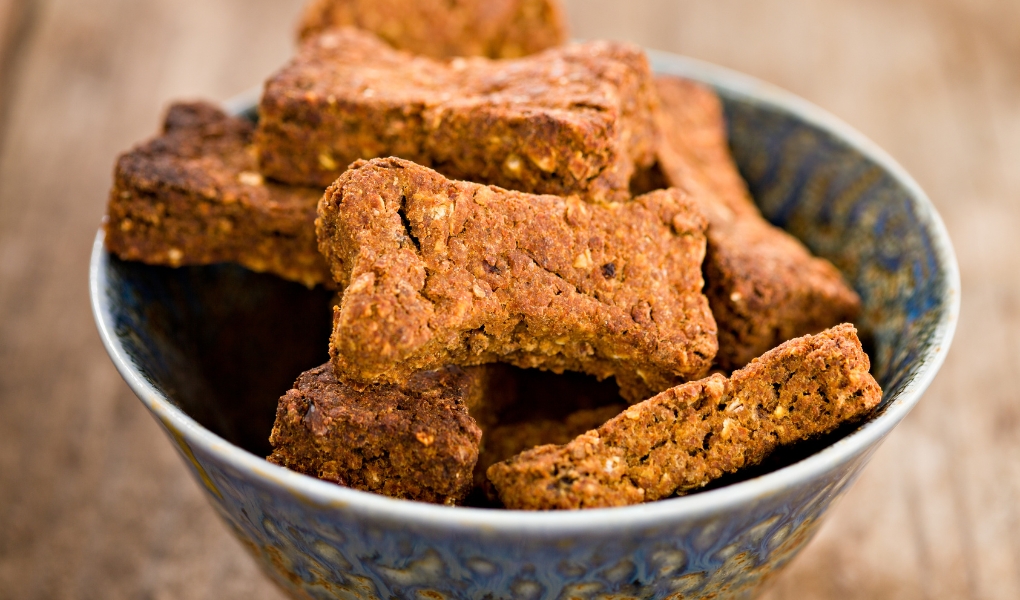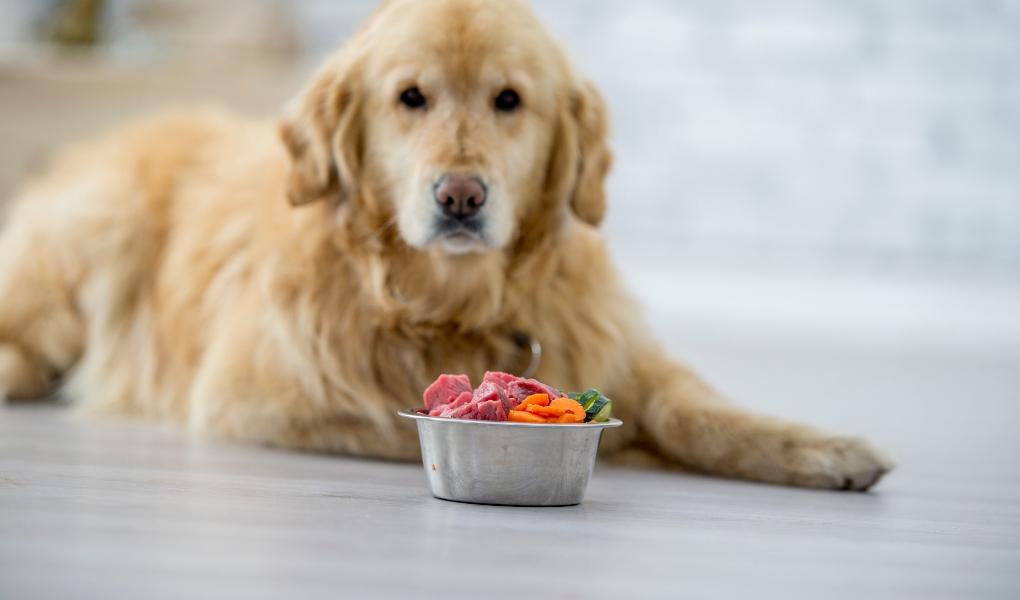Table of Contents
ToggleA Comprehensive Guide
Making homemade dog food can be a rewarding way to ensure your pet receives a balanced and nutritious diet. This comprehensive guide will provide you with the knowledge and tools you need to create healthy meals for your dog at home.
Introduction to Homemade Dog Food
Homemade dog food allows you to control the quality and ingredients of your dog’s diet. It can be especially beneficial for dogs with specific dietary needs, allergies, or sensitivities. However, it’s crucial to ensure that the food you prepare meets all of your dog’s nutritional requirements.
Benefits of Making Homemade Dog Food
Quality Control:
- Choose the Best Ingredients: You have complete control over the quality of ingredients used.
- Avoid Additives: Homemade food is free from artificial preservatives, colors, and flavors.
Customization
- Tailor to Specific Needs: Customize the diet to meet your dog's specific health needs and preferences.
- Manage Allergies: Easily avoid allergens and sensitivities.
Cost-Effective:
- Bulk Buying: Buying ingredients in bulk can be cost-effective.
- Homemade Savings: Preparing food at home can be cheaper than premium commercial dog food.
Increased Transparency:
- Know What Your Dog Eats: You know exactly what is going into your dog's food, providing peace of mind about their diet.
- No Hidden Ingredients: Avoid the mystery of hidden ingredients found in some commercial dog foods.
Environmental Benefits:
- Less Packaging Waste: Homemade dog food reduces the amount of packaging waste compared to commercial dog food.
- Sustainable Choices: Choose sustainably sourced ingredients to minimize environmental impact.
Essential Nutrients for Dogs
To ensure a balanced diet, homemade dog food must include the following essential nutrients:
Proteins:
- Importance: Proteins are vital for muscle growth, repair, and overall body function.
- Sources: Chicken, beef, turkey, fish, eggs, and legumes.
Fats
- Importance: Fats provide energy, support cell function, and help absorb fat-soluble vitamins.
- Sources: Fish oil, flaxseed oil, chicken fat, and beef fat.
Carbohydrates:
- Importance: Carbohydrates provide energy and support healthy digestion.
- Sources: Sweet potatoes, brown rice, oats, and barley.
Vitamins and Minerals:
- Importance: Essential for various bodily functions, including immune health, bone development, and metabolism.
- Sources: Fruits (like blueberries and apples), vegetables (like spinach and carrots), and supplements if needed.
Fiber:
- Importance: Fiber aids digestion and helps maintain healthy bowel movements.
- Sources: Pumpkin, carrots, and brown rice.
Creating Balanced Homemade Dog Food Recipes
Step 1: Consult Your Veterinarian
- Importance: Before making any dietary changes, consult your veterinarian to ensure the diet meets your dog's specific needs.
- Customization: Your vet can help tailor the diet based on your dog's age, weight, activity level, and health conditions.
Step 2: Choose High-Quality Ingredients
- Freshness: Select fresh, high-quality ingredients. Organic and locally sourced options are ideal.
- Variety: Incorporate a variety of protein sources, vegetables, and grains to ensure a well-rounded diet.
Step 3: Prepare Recipes
- Recipe 1: Chicken and Rice
Ingredients:
- 2 cups of cooked chicken breast, chopped
- 1 cup of cooked brown rice
- 1 cup of chopped vegetables (carrots, peas, spinach)
- 1 tablespoon of fish oil
Instructions:
- Cook the chicken thoroughly and chop it into small pieces.
- Cook the brown rice according to package instructions.
- Steam or boil the vegetables until tender.
- Mix all ingredients together and add the fish oil.
- Allow the food to cool before serving
- Recipe 2: Beef and Sweet Potato
Ingredients:
- 2 cups of lean ground beef
- 1 cup of cooked sweet potatoes, mashed
- 1 cup of chopped green beans
- 1 tablespoon of flaxseed oil
Instructions:
- Cook the ground beef thoroughly, draining excess fat.
- Cook and mash the sweet potatoes.
- Steam or boil the green beans until tender.
- Mix all ingredients together and add the flaxseed oil.
- Allow the food to cool before serving.
- Recipe 3: Fish and Quinoa
Ingredients:
- 2 cups of cooked white fish (cod or tilapia), flaked
- 1 cup of cooked quinoa
- 1 cup of chopped vegetables (zucchini, carrots)
- 1 tablespoon of olive oil
Instructions:
- Cook the fish and flake it into small pieces.
- Cook the quinoa according to package instructions.
- Steam or boil the vegetables until tender.
- Mix all ingredients together and add the olive oil.
- Allow the food to cool before serving.
Safety Tips for Homemade Dog Food
Avoid Harmful Ingredients:
- No Onions or Garlic: These can be toxic to dogs.
- Limit Salt and Spices: Too much salt or spices can be harmful.
- Avoid Chocolate and Caffeine: Both are highly toxic to dogs.
Proper Food Storage:
- Refrigeration: Store homemade dog food in airtight containers in the refrigerator and use within three to four days.
- Freezing: For longer storage, freeze portions in airtight containers or freezer bags.
Maintain Hygiene:
- Clean Utensils and Surfaces: Ensure all utensils and surfaces are clean to prevent contamination.
- Wash Hands: Always wash your hands before preparing your dog's food.
Monitor Your Dog's Health:
- Regular Check-Ups: Keep regular veterinary appointments to monitor your dog's health and nutritional status.
- Watch for Allergies: Introduce new ingredients slowly to watch for any allergic reactions.
Benefits of Making Homemade Dog Food
Quality Control:
- Choose the Best Ingredients: You have complete control over the quality of ingredients used.
- Avoid Additives: Homemade food is free from artificial preservatives, colors, and flavors.
Customization:
- Tailor to Specific Needs: Customize the diet to meet your dog's specific health needs and preferences.
- Manage Allergies: Easily avoid allergens and sensitivities.
Cost-Effective:
- Bulk Buying: Buying ingredients in bulk can be cost-effective.
- Homemade Savings: Preparing food at home can be cheaper than premium commercial dog food.
Potential Challenges of Homemade Dog Food
Nutritional Balance:
- Ensuring Completeness: Ensuring a balanced diet can be challenging and requires careful planning.
- Supplementation: You may need to add supplements to meet all nutritional requirements.
Time-Consuming:
- Preparation Time: Preparing homemade meals can be time-consuming.
- Planning: Meal planning and preparation require consistent effort.
Conclusion
Making homemade dog food can be a fulfilling way to provide your pet with a nutritious and balanced diet. By understanding the essential nutrients, consulting with your veterinarian, choosing high-quality ingredients, and following safety tips, you can ensure your dog receives the best possible nutrition. Why not start today and see the positive impact on your dog’s health and happiness? For more expert insights and comprehensive guides, explore our other blog posts at Harmony Dog Food.







